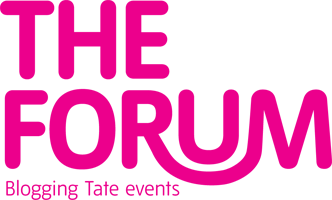Editing is often an act of extreme violence that should never be exercised upon oneself. That's why professionals are hired to wield the ax that cuts through the redundant sentences or the not-quite-right photographs that, as the author or the artist, you've grown attached to in spite of their shortcomings.
The leader of the Urban Portraiture workshop, Melanie Manchot , summed it best when she said : “Sometimes you have to kill your babies.” Thankfully, no babies were harmed in the second week of this workshop as the participants submitted examples of their very own photographic work to the critical abilities of their peers. Ranging from candid street photography to improvised studio portraits, the works were displayed on tables like the many offerings of a breakfast buffet, quite appropriate on this gray Saturday morning.
Some projects stood out for the strategy that they employed. For instance, one participant used a single red circular (magic) carpet and a brick wall as an improvised set to photograph children. The recurrence of this device in a series of about 20 photographs steered the focus away from the context and allowed for the children's personalities to come across in wildly different ways. One series simply depicted the people that the photographer regularly encountered on her street in the form of candid color portraits. Beautiful in its simplicity, this project was well executed and inevitably satisfied a form of curiosity that we all have about the people around us. What is their story? Where do they go when they take the bus every morning? What does their house look like? Another project pushed this form of curiosity one step further by documenting the lives of the residents of the Elephant and Castle area of London. Instead of taking portraits of the people themselves, the photographer created spare images of their beds as they leave it in the morning. The resulting images are haunting and, paradoxically, they represent presence just as well as absence.
Other projects were more memorable for what they represented or for their specific aesthetic. That was the case of a few series of surreptitious photographs of random people taken in public spaces. I was surprised by the double standard that they generated. Indeed, one a group of intriguing images of men photographed in the street led to comments about seduction and mystery as well as parallels with the work of Sophie Calle. Yet, a series of portraits of women shot in similar circumstances was referred to as predatory. Perhaps this tension can partly be explained by the fact that the former project was produced by a woman and the latter by a man. Yet, there were other elements that impacted on our reception of these images. The respective photographs looked very different: the men were depicted in sharp black and white from a significant distance, whereas the women had been shot in color, fairly up close and the pictures were shot from the hip level leading to an unusual composition. These aesthetic differences certainly impacted on our understanding of the photographs along with the mode in which they were presented. The first series made use of the narrative device of the triptych in small format prints to direct the attention to the subject’s story, whereas the other series comprised individual medium format prints, focusing on the subject's appearance rather than her actions or the context. Still, I can’t help but wonder if we would have reacted in the same manner had we not known the gender of the artist... Is the photographer always a bit of a predator?
Monday, June 23, 2008
Scruples Behind the Lens
Subscribe to:
Post Comments (Atom)




No comments:
Post a Comment